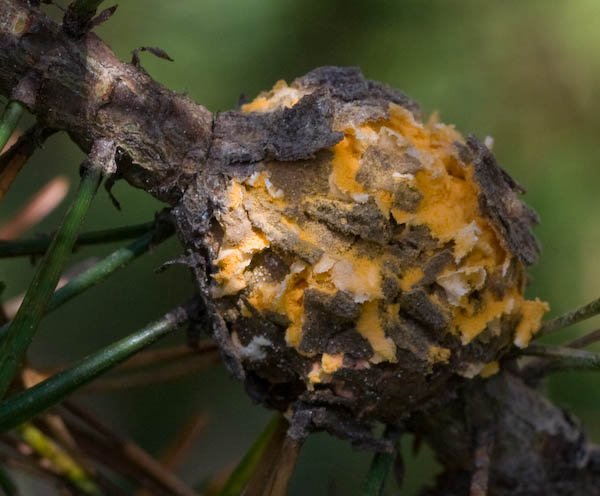
Western Gall Rust
Endocronartium harknessii
Unlike some other rusts, Western Gall Rust apparently does not need alternate hosts to complete its life cycle. It utilizes several different pine species, including our local version, the Shore Pine. This is all assuming that the identification is correct, and I’m not absolutely positive about that.
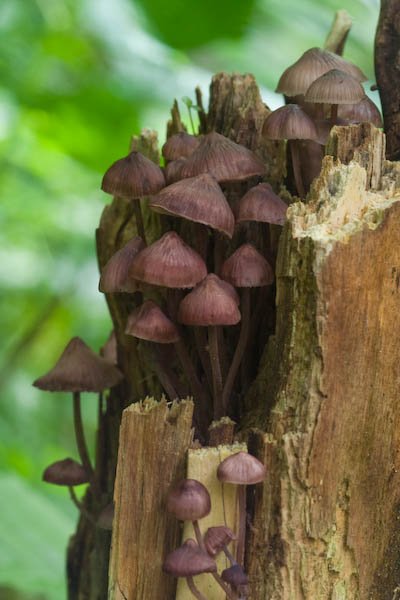
Unidentified Fungus
I suppose these almost qualify as “LBM’s” (Little Brown Mushrooms). They weren’t really all that small, however. The larger ones were probably around 10cm tall, if I am remembering correctly. They were growing out of the remains of an alder tree in Totem Park.

Deerheart
Maianthemum dilatatum
This is a very common plant in the woods. Its leaves can completely obscucre the ground below them. Another common name is False Lily-of-the-Valley, but I prefer the name I learned growing up. I’m not sure, but I think deer utilize the leaves as food, since I have seen where the leaves had been browsed, and deer seem the most likely candidate. The flowers are sweet scented, and it forms red berries that can often be found on their long stem through the winter, long after the leaves have decayed.

Other Photos
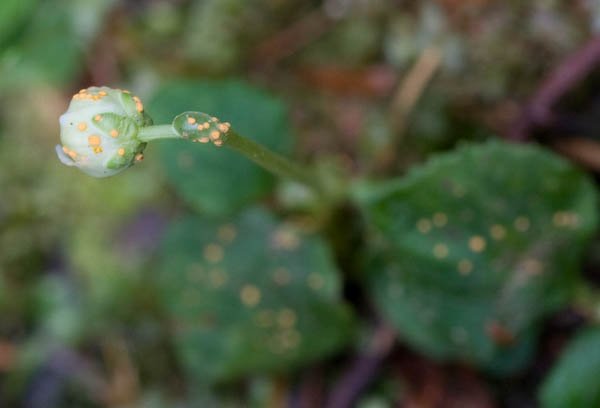
Coastal Spruce Cone Rust
Chrysomyxa monensis
The orange spots on this plant (notice that it’s also on the leaves), is a rust (fungus). Several of the plants had this fungal infection but still seemed to be developing, albeit with extra orange spots.
Apparently many rust fungi utilize more than one host to complete their life cycle. This particular species only uses Sitka Spruce (where it grows on the cones) and Single Delight (as seen here) for the various parts of its life cycle.
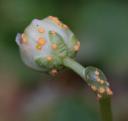
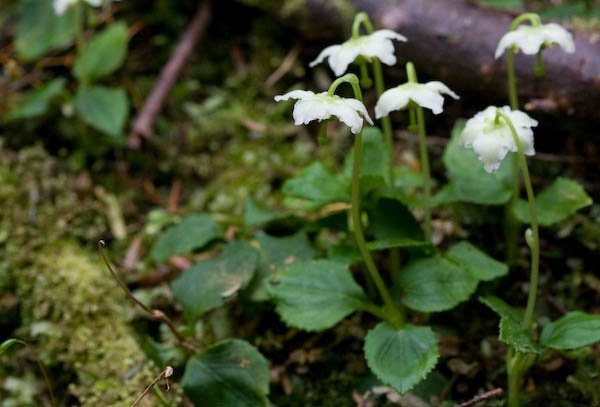
Shy Maiden
Moneses uniflora
Other common names for this plant include Single Delight and Waxflower. If you pay close attention, you can catch the faint lemony scent coming from these flowers without sticking your nose right up in them. They are a common plant in partially shaded forest areas. The leaves are green throughout the winter.



Other Photos









